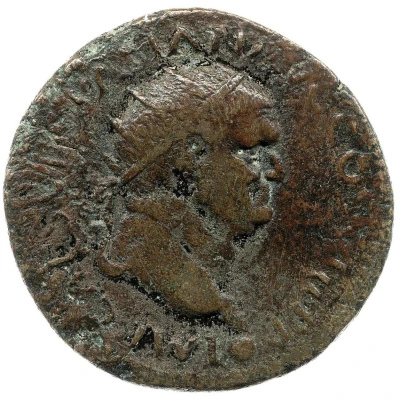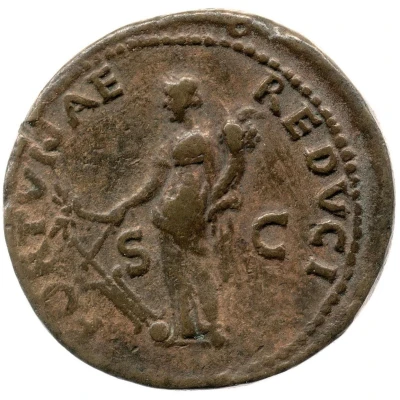


© Trustees of the British Museum
Dupondius - Vespasian FORTVNAE REDVCI S C; Fortuna
| Bronze | 12.09 g | - |
| Issuer | Rome › Roman Empire (27 BC - 395 AD) |
|---|---|
| Emperor | Vespasian (Titus Flavius Vespasianus) (69-79) |
| Type | Standard circulation coin |
| Years | 77-78 |
| Value | 1 Dupondius = ⅛ Denarius |
| Currency | Denarius, Reform of Augustus (27 BC – AD 215) |
| Composition | Bronze |
| Weight | 12.09 g |
| Shape | Round (irregular) |
| Technique | Hammered |
| Demonetized | Yes |
| Updated | 2024-10-06 |
| Numista | N#250134 |
|---|---|
| Rarity index | 100% |
Reverse
Fortuna, draped, standing left, holding rudder set on globe, cornucopiae, and branch.
Script: Latin
Lettering: FORTVNAE REDVCI S C
Translation:
Fortunae Reduci. Senatus Consultum.
Returning fortune. Decree of the senate.
Comment
Source: Online Coins of the Roman Empire (OCRE)Interesting fact
The Dupondius coin featuring Vespasian and Fortuna is interesting because it was minted during a time of significant economic reform in the Roman Empire. Vespasian, who ruled from 69-79 AD, introduced a new system of taxation and minting to address the empire's financial crisis. The Dupondius was one of the new coin denominations introduced during this time, and it was made of bronze, a more affordable material than the silver or gold coins that were also in circulation. Despite being made of a less valuable material, the Dupondius was still a widely used and highly valued coin, and it features an image of Fortuna, the Roman goddess of luck and prosperity, on its reverse side. This coin is a tangible representation of the economic and political changes that took place during Vespasian's reign, and it provides a unique insight into the lives of everyday Romans during this time period.

